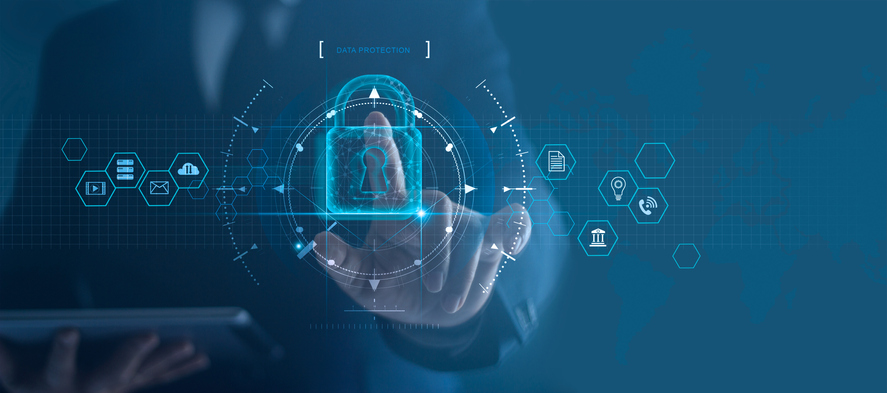Top 2020 Cybersecurity Threats
Managed IT cybersecurity professionals have been challenged to the hilt through the first half of 2020. Phishing attacks increased by upwards of 600 percent during the height of the pandemic as industry leaders made haste to move to the Cloud or increase their remote workforce infrastructure. Industry leaders have been so busy dealing with the very next issue they haven’t had a moment to prepare for emerging cybersecurity threats.

As Gartner analyst Peter Firstbrook explains, the resulting changes implemented to deal with the pandemic “accelerated digitalization of business processes.” Putting operational success on a wireless fast track may have left organizations increasingly vulnerable to wide-ranging threats. According to antivirus software giant Norton, these are top cybersecurity threats organizations may not be prepared to handle.
- Deepfakes: This trick uses artificial intelligence to combine words and create phony images and messaging.
- Synthetic Identities: This new method to perpetrate fraud blends real and fabricated personal identity information to build a representation of a real person.
- AI-Powered Digital Attacks: Cybercriminals can now create programs that even replicate human behaviors to fool people into providing sensitive financial information.
- 5G Challenges: The rollout of 5G is expected to increase cybersecurity risks on the Internet of Things (IoT) logistics networks.
- Auto Hacks: Increased reliance on technology in cars, SUVs, and other vehicles, has cracked the door for a new type of automobile hack.
- Cloud Jacking: This type of cyber-attack leverages weaknesses in programs and systems to penetrate Cloud-based networks and use them to mine cryptocurrency.
- Ransomware Attacks: According to Security Magazine, more than 151 million ransomware attacks were carried out during the first three-quarters of 2019 alone. They show no sign of slowing down.
Decision-makers who are finally getting their feet under them would like nothing better than to focus exclusively on profit-driving endeavors. But sustaining a debilitating data breach or costly ransomware attack would only bring your efforts to a screeching halt. The question industry leaders may want to be asking, right now, is if you are prepared to deal with critical threats. These are strategies cybersecurity consultants believe are determined solutions going forward.
Extended Detection & Response Proves Meaningful
Extended detection and response (XDR) strategies employ automation to collects and assess data and run this information through a variety of cybersecurity innovations. The process improves early threat detection, deterrence, and response times.
Cybersecurity Automation Comes of Age
Hackers continue to utilize as many technological tools as they can get their keyboards on, and AI has been a boon for digital thieves. But for every move an online criminal makes, cybersecurity experts have a counter. Automating cybersecurity tools through AI and machine learning drive computer-centric systems in the direction of real-time defense. The strategy also streamlines systems by eliminating redundancies that can slow response solutions.
New Breed of CSOs Emerges
Given the emergence of non-traditional threats that evolved during 2019, organizations are looking for enterprise-level chief security officers (CSOs) to deliver on the promise of increased investment. Managed IT professionals rallied around the banner of “enterprise-level cybersecurity” for years. But perhaps the missing piece of the puzzle was decision-makers who understand the underlying infrastructure and salient details.
As ransomware attacks, GPS spoofing, and the next scheme rears its ugly head, having a security professional who can assess, secure, defend, and pivot with agility could make a significant difference. Either CSOs will need to catch up to the wave of next-generation threats or make way for a new breed of enterprise-level executives.
Are Privacy Professionals Needed?
Complying with government data privacy and protection regulations appears to be growing into a discipline of its own. New York, California, and even the EU have pushed through regulations that have national and global implications. And although these laws are stringent, they don’t even scratch the surface of industry-specific data protection and privacy oversight.
Industry leaders find themselves at a crossroads in 2020, deciding whether to create a full-time management position to provide regulatory oversight or outsource. Many are opting to work with a high-level cybersecurity firm to harden their defenses and ensure best practices that always meet or exceed compliance regulations.
Growth in Zero-Trust Networks
In some cybersecurity circles, consultants advocate for an increase in zero-trust networks that shield applications and data from the view of prying eyes. Although virtual private networks (VPN) were considered high-level protection for remote workers, zero-trust appears to be proving even more beneficial. The underlying premise is that a VPN might be difficult to uncover, but a hacker can wreak havoc once breached. Zero-trust networks, by contrast, limit access by the user. Even if a digital scammer swipes someone’s login information, they gain only limited and managed access.
The advanced schemes trolled out by digital thieves gives industry leaders and cybersecurity specialists a headache every year. Although hackers in 2020 leverage cutting-edge technologies, these bad actors can still be contained.
If your organization, like many others, could be vulnerable to these or other next-generation cybersecurity threats, it’s time to harden your defenses. A third-party cybersecurity firm can conduct a full review of your network, evaluate best practices, compliance, and provide a report. With this objective information in hand, your organization can be prepared, come what may.
